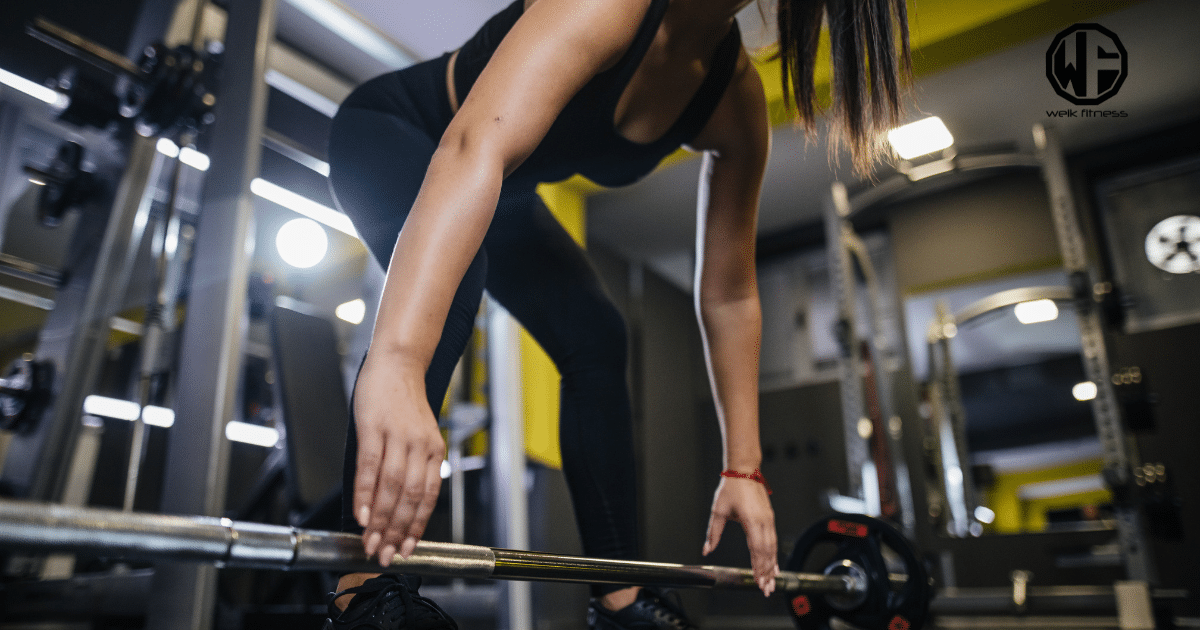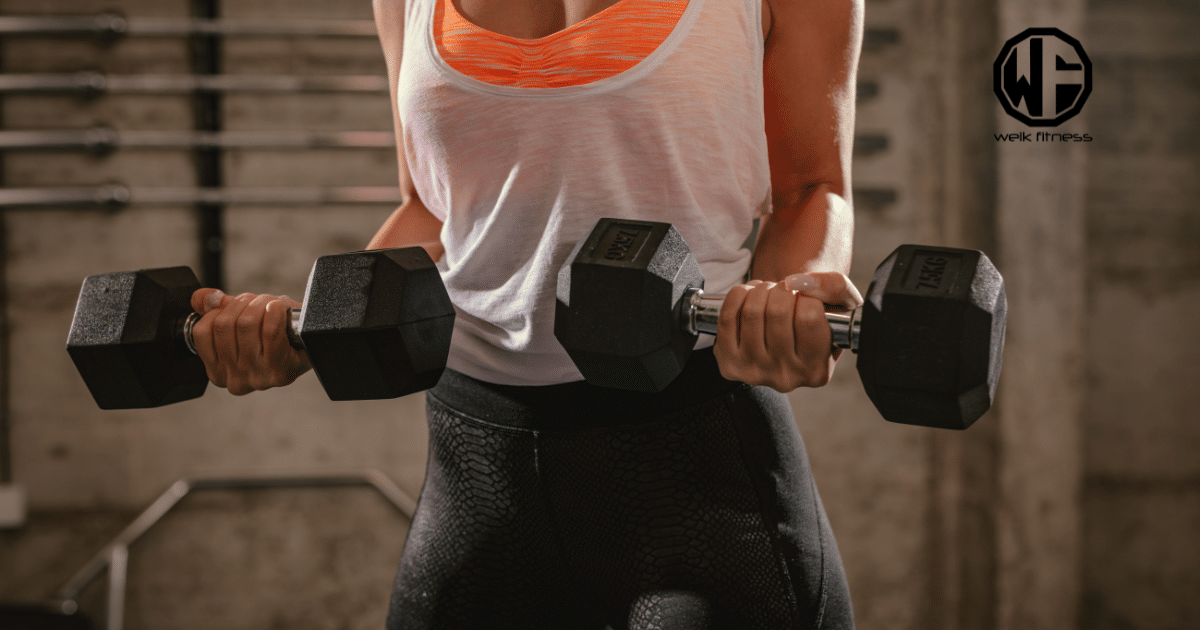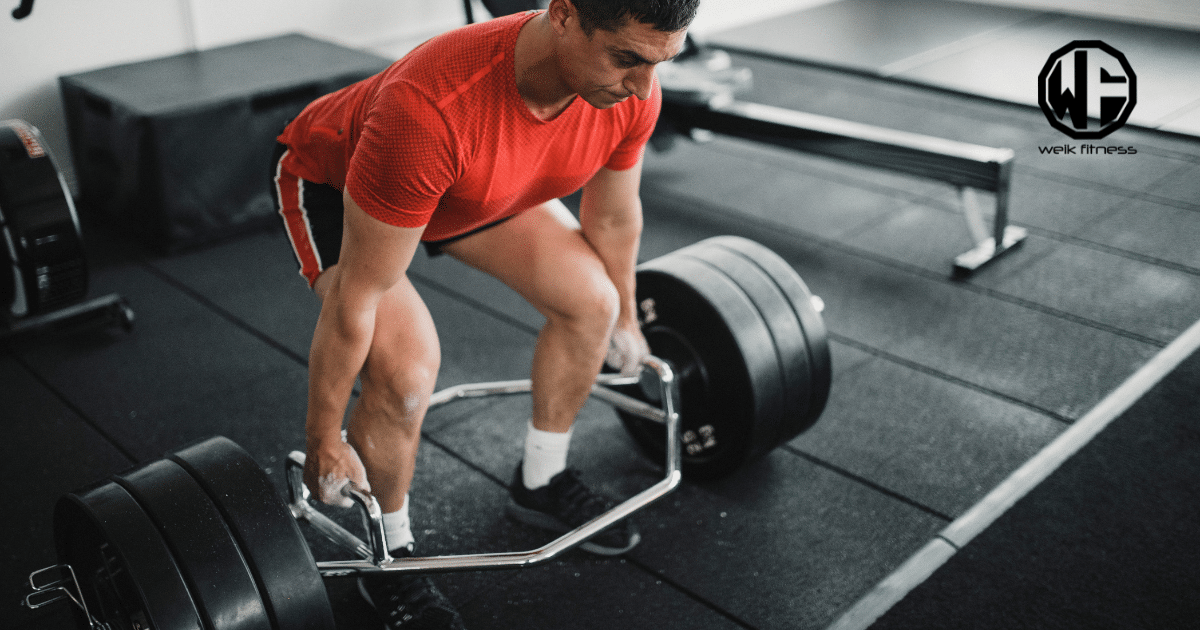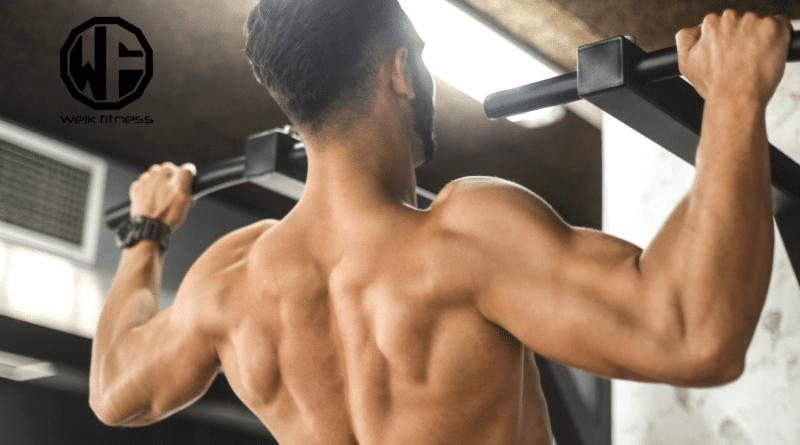The Best Pull Day Workouts & Exercises for Functional Fitness
Struggling to find the right pull day workouts for your fitness routine? You’re definitely not alone in that boat. Many of us trudge through this challenge on a quest for exercises that not only boost muscle growth but also amp up our strength training in a real way.
It took some time and a lot of sifting through various sources, but what I unearthed was pretty straightforward yet impactful: weaving deadlifts, pull-ups, and rows into your workout regime can make a substantial difference in your functional fitness.
This strategy hits those key upper body muscle groups hard while fostering overall strength enhancement — something that’s golden for daily life tasks as much as it is for crushing it in athletic pursuits.
Related Article: The Best Back Cable Workouts & Exercises for Width
In this article, we’ll dive deeper into the best pull day workouts and exercises specifically designed with functional fitness in mind. From breaking down deadlift variations to fine-tuning your pull-up approach, you’ll get all the insider tips needed to craft an effective workout plan.

Ready to level up your functional fitness and muscle growth? Let’s jump right in and talk pull day workouts and the best exercises to get the job done on a typical pull day!
Disclaimer: This article is for informational purposes only and is not meant to treat or diagnose any condition. It is recommended that you speak with your doctor before starting any exercise program, changing your daily nutrition, or adding any supplements to your regimen.
Table of Contents
- Key Takeaways
- The Benefits of Pull Day Workouts
- The Best Pull Day Exercises to Build Muscle
- 1. Deadlift Variations for Pull Day Training
- 2. Techniques for a Successful Pull-up
- 3. Chin-up: Grip Variations and Benefits of This Pull Exercise
- 4. Mastering the Barbell Row in Your Workout Routine
- 5. Maximizing Gains with One-Arm Dumbbell Row
- 6. Lat Pulldown for Optimal Back Development
- 7. Cable Row: Technique and Variations
- 8. The Role of Cable Pullovers in Back and Shoulder Health
- 9. Dumbbell Rear Lateral Raise for Shoulder Width
- 10. Alternating Dumbbell Curl for Bicep Growth
- Crafting the Best Pull Day Workout Routine
- Sample Pull Workout: Pull Day #1
- Sample Pull Workout: Pull Day #2
- Structuring Effective Pull Day Workouts
- Compound vs. Isolation Movements on Pull Day
- Optimal Warm-up Exercises for Pull Day Workouts
- Choosing the Right Workout Split
- Key Strategies for Pull Day Success
- The Importance of Upper Body Pull Training
- Injury Prevention Techniques for Pull Day Workouts
- Tracking Your Progress with Pull Day Workouts
- Combining Pull and Leg Workouts
- The Feasibility of Push and Pull on the Same Day
- Back and Biceps: The Classic Pull Day
- Decoding PPL: Push, Pull, Legs
- Leverage the Best Pull Exercise on Pull Day Workouts for Maximum Results
- FAQs (Pull Day Workouts)
Key Takeaways
- Pull day workouts like deadlifts, pull-ups, and lat pulldowns are great for enhancing muscle strength and improving daily functions.
- Including both compound and isolation exercises in your routine can help prevent muscle imbalances and boost overall fitness.
- Techniques such as proper form, progressive overload, and varying exercises ensure maximum gains from pull day workouts.
- Warming up properly with dynamic stretches and light cardio is key to preventing injuries during pull workouts.
- Tracking progress by increasing weights or adjusting the workout split can lead to continued improvements in functional fitness.

The Benefits of Pull Day Workouts
Preventing muscle imbalances enhances performance in key exercises and optimizes training time. Let’s dive into some of the benefits of pull day workouts and some of the different exercises you can expect to do during these training sessions.
1. Prevention of Muscle Imbalances
Muscle imbalances can throw off your game, making you weaker where you should be strong. I focus on pull exercises to hit those hard-to-reach spots. Deadlifts, rows, and pull-ups balance my upper body.
Related Article: How to Effectively Structure Winter Bulking Workouts
This strategy prevents one side from getting more attention than the other.
Pulling moves with lighter weights and more reps shape my back muscles without adding bulk. It’s like keeping everything in line — my posture gets better, and I avoid injuries that could set me back.
Using a mix of compound and isolation exercises ensures every muscle group gets its turn.
Balance in training leads to strength in performance.
2. Enhanced Performance in Key Exercises
Pull day exercises like deadlifts and rows boost my performance in key lifts. Deadlifts make my legs and lower back stronger. This helps me squat deeper and lift more weight. Rows strengthen my upper back, making pull-ups easier.
These exercises also improve how other muscles work together. For example, a strong back supports better bench press form. When I row with good technique, it makes pushing motions smoother.
This synergy between muscle groups is crucial for overall fitness growth.
3. Efficiency in Training Time
Pull day workouts pack a punch for those short on time. Techniques like supersets, drop sets, and rest-pause training cut down our gym hours. They keep the volume of our exercises high but slash the time in half.
This means we can build muscle without living in the gym.
Related Article: When is the Best Time to Exercise?
These strategies make every minute count. We hit our muscles hard and fast, giving us more time for rest or dealing with life’s other demands. With pull day routines, we focus on strengthening our back, which boosts how well we do in other activities or sports.
It’s all about being smart with our time and effort to get stronger and more fit without wasting a second.
The Best Pull Day Exercises to Build Muscle

Deadlift Variations, such as sumo deadlifts and Romanian deadlifts, engage multiple muscle groups… Master the Barbell Row to target your upper back muscles and promote better posture.
Use Lat Pulldown for a wide, V-shaped back and enhanced pulling strength.
1. Deadlift Variations for Pull Day Training
Deadlift variations add excitement and diversity to pull workouts, serving as foundational strength-training exercises with numerous benefits. Here are some deadlift variations to power up your routine:
- Sumo Deadlift: This variation involves a wider stance and hands inside the knees, activating more muscles in the hips and lower back.
- Romanian Deadlift: Focused on the hamstrings and glutes, this variation emphasizes the hip hinge movement, enhancing posterior chain strength.
- Trap Bar Deadlift: The trap bar (hex bar) offers a different grip position that can be easier on the lower back while targeting similar muscles as the conventional deadlift. Personally, I have a bad lower back, and this allows me to complete deadlifts without pain.
- Snatch-Grip Deadlift: With a wider grip, this variation emphasizes upper back engagement and mobility, promoting better pulling mechanics.
- Deficit Deadlift: By standing on a raised platform, this variation increases the range of motion, intensifying the focus on leg drive and back strength.
These deadlift variations ensure well-rounded muscle development and provide options for individuals with differing needs or constraints.
Related Article: Injury Free Deadlift — How to Effectively Do It Safely
2. Techniques for a Successful Pull-up
To excel at pull-ups, ensure your grip is slightly wider than shoulder-width apart. Engage your core and squeeze your glutes to maintain a straight body position throughout the movement. Here are some key techniques for successful pull-ups:
- Proper Grip: Start with an overhand grip, with your hands slightly wider than shoulder-width apart.
- Initiate the Movement: Pull yourself up by driving your elbows down and back, aiming to bring your chest towards the bar.
- Controlled Descent: Lower yourself down in a slow and controlled manner, fully extending your arms at the bottom.
- Breathing: Exhale as you pull yourself up and inhale as you lower down.
- Scalability: If needed, use resistance bands or an assisted pull-up machine to gradually build strength for unassisted pull-ups.
3. Chin-up: Grip Variations and Benefits of This Pull Exercise
When performing chin-ups, grip the bar with your palms facing you and hands shoulder-width apart. This movement targets muscles in the arms, shoulders, and upper back. It enhances grip strength while improving posture and overall appearance by stabilizing the spine.
Chin-ups engage muscles in the hands and forearms as well. Varying your grip can also target different muscle groups for a comprehensive upper body workout routine. Incorporating these variations not only strengthens important muscle groups but also challenges your body to continually improve its strength and fitness levels.
4. Mastering the Barbell Row in Your Workout Routine
Barbell rows work multiple muscle groups with different grip options and rowing variations. It’s a bent-over row targeting the back muscles, lats, trapezius, and rear deltoids. This exercise helps improve rowing performance and prevent injuries.
It primarily engages the lats, trapezius, and rear deltoids while also working the biceps, lower back, and grip strength. Whether using bodyweight or equipment like dumbbells or barbells — barbell rows are crucial for back muscle development and injury prevention during workouts.
5. Maximizing Gains with One-Arm Dumbbell Row
Let’s talk about maximizing gains with a one-arm dumbbell row. This exercise is crucial for building strong, functional back muscles and enhancing overall fitness. It targets the latissimus dorsi, providing essential support for functional movements like pulling and lifting heavy objects in everyday life and athletic endeavors.
When performing this exercise, it’s important to focus on proper form by keeping your back straight and engaging your core. Inhale as you pull the dumbbell towards your hip while driving your elbow upward to fully engage your lats.

Gradually lower the weight back down while exhaling, feeling the stretch in your back muscles. By incorporating this effective movement into your workout routine, you can significantly boost strength and muscle hypertrophy in your upper body.
Remember these key points: Focus on proper breathing technique during each repetition; keep your movements controlled to maximize muscle engagement; ensure that you’re targeting the intended muscle groups throughout the exercise for optimal results.
6. Lat Pulldown for Optimal Back Development
The lat pulldown is a crucial exercise for developing a strong and balanced back. It targets the latissimus dorsi, trapezius muscles, rhomboids, and biceps to enhance upper body strength and muscle mass.
This multi-joint movement not only aids in building a powerful back but also benefits shoulder and arm muscles. Incorporating the lat pulldown into your workout routine can significantly contribute to increasing strength in your middle back and lats.
Utilizing this exercise ensures optimal development of key muscles that support functional fitness — it’s an effective addition to any regimen aimed at improving overall strength and performance.
7. Cable Row: Technique and Variations
The cable row is a versatile exercise for building a strong back. To perform the seated cable row, begin by sitting with your knees slightly bent and feet secured on the footplate.
Grasp the handle with an overhand grip, pull it towards you, and squeeze your shoulder blades together at the end of the movement. Keep your back straight throughout to maximize its effectiveness.
For added variation, consider using different handles, such as V-bar or D-handle attachments, to target specific areas of your back muscles. Experimenting with wide and narrow grips can engage different parts of your lats and rhomboids for a well-rounded back workout.
8. The Role of Cable Pullovers in Back and Shoulder Health
Incorporating cable pullovers into your regimen can efficiently target your lats and shoulder muscles. The exercise helps to strengthen the shoulders through adduction and internal rotation while also engaging the upper back.
This compound exercise bridges the gap between chest and back workouts, making it a valuable addition to any pull day routine. Specifically targeting these muscle groups can improve overall functional fitness, assisting in daily movements and activities.
The incline cable pullover is particularly recommended for optimizing back and shoulder health due to its ability to engage those specific muscle groups effectively. This exercise is pivotal for enhancing shoulder stability and developing strength in the lats.
9. Dumbbell Rear Lateral Raise for Shoulder Width
The dumbbell rear lateral raise targets the shoulder muscles. It can help build strong shoulders and be part of a pull day workout routine with other upper body pull exercises to enhance muscle and strength.
Beginners can learn this exercise by raising the dumbbells out at a 45-degree angle until the elbows are just below parallel with the shoulder level, focusing on form for optimal benefits.
10. Alternating Dumbbell Curl for Bicep Growth
Alternating dumbbell curls are a fantastic way to build strong, defined biceps and improve arm strength. These curls effectively target the biceps and forearms, helping to eliminate any muscular imbalances while promoting balanced growth.
By incorporating alternating dumbbell curls into your workout routine, you can achieve both size and strength in your arms. Dumbbells offer versatile options for developing robust bicep workouts tailored towards strength, power, hypertrophy, metabolic training, or a full body workout regimen.
When done correctly, alternating dumbbell curls engage multiple muscles, including the biceps brachii (long head and short head), brachialis muscle of the upper arm as well as the brachioradialis of the forearm, providing comprehensive development across these muscle groups.
Crafting the Best Pull Day Workout Routine

Craft a powerful pull day routine with two effective sample routines and essential strategies for success. Learn about compound versus isolation movements, selecting the right warm-up exercises, preventing injuries, and tracking progress.
Sample Pull Workout: Pull Day #1
Let’s dive into an effective pull day routine specifically tailored to enhance upper body strength and muscle development. This routine is meticulously designed to incorporate a balanced mix of compound and isolation exercises, ensuring comprehensive targeting of the back, biceps, and other related muscle groups.
- Pendlay Rows: Begin with 3 sets of this compound exercise, utilizing an overhand grip and maintaining a straight back posture throughout.
- Pull-Ups: Perform 4 sets of this challenging bodyweight exercise with an overhand grip, effectively engaging the lats and biceps.
- Seated Cable Rows: Execute 3 sets using different grip variations to effectively work the middle back muscles, ensuring a full range of motion.
- Barbell Curls: Incorporate 3 sets of barbell curls to isolate the biceps, aiming for controlled movements and complete muscle engagement.
- Face Pulls: Conclude this routine with 3 sets of face pulls using a rope attachment on a cable machine to target the rear deltoids and upper back region.
- Remember to maintain proper form throughout each exercise to maximize results and minimize the risk of injury.
This pull day routine provides a well-rounded approach to building functional strength in the upper body while promoting muscle balance and overall fitness.
Sample Pull Workout: Pull Day #2
Here’s an outline for “Sample Routine: Pull Day Two” that you might find helpful:
1. Warm Up with Band Pull-Aparts
- Stand with feet shoulder-width apart.
- Hold a resistance band in front of you at chest level.
- Pull the band apart, stretching it across your chest.
- Repeat for 2 sets of 12 reps.
2. Deadlifts for Strength and Power
- Position your feet hip-width apart, toes under the barbell.
- Grasp the bar with an overhand grip just outside of your legs.
- Lift the bar by extending your hips and knees to stand up straight.
- Lower the bar back to the starting position in a controlled manner.
3. Wide-Grip Lat Pulldowns
- Sit at a lat pulldown machine with knees secured under the pads.
- Grab the wide bar with an overhand grip.
- Pull the bar down smoothly until it almost touches your upper chest.
4. Renegade Rows for Core Stability
- Assume a push-up position, holding a pair of dumbbells in each hand.
- Perform a push-up while holding onto the handles of each dumbbell.
- Row one dumbbell up towards your hip while stabilizing your body.
5. Hammer Curls to Target Forearms
- Stand holding a pair of dumbbells by your sides using a neutral grip (palms facing each other).
- Curl both dumbbells towards your shoulders, keeping your elbows close to your body.
6. Seated Cable Rows for Mid-Back Development
- Sit on the bench and place your feet on the platform in front of you.
- Grasp the handle with both hands, arms fully extended, and pull back until you feel the contraction in your back muscles.
Remember, always focus on maintaining proper form throughout each exercise to maximize effectiveness and reduce injury risk!
Structuring Effective Pull Day Workouts
Craft a balanced pull day routine by incorporating compound and isolation exercises. Begin with compound movements such as deadlift variations or barbell rows to engage multiple muscle groups, fostering overall functional strength.
Then, target specific muscles with isolation exercises like one-arm dumbbell rows or cable pullovers for comprehensive development. Don’t overlook the warm-up stage; execute dynamic stretches and light cardio to prepare your body for optimal performance and prevent injury.
Consider personalizing your regimen based on individual goals, physique, and fitness level. Track progress regularly to refine your routine further.
Execute a successful pull day by balancing push-and-pull motions adeptly in workouts: this involves combining pushing exercises from other workout days (like chest) with pulling ones on designated days (such as back).
With this strategy, you can capitalize on enhanced muscular engagement while avoiding overtraining any particular group of muscles. Incorporate adequate rest between sessions — aim for at least 48 hours before targeting similar muscles again to optimize recovery and growth potential.
Compound vs. Isolation Movements on Pull Day
Compound movements involve multiple joints and muscle groups, boosting overall strength and coordination. The big three — squats, deadlifts, and bench press — are prime examples of the power of compound movements in a functional workout routine.
On pull day, they engage various upper body muscles simultaneously — perfect for efficiently targeting several muscle groups at once.
In contrast, isolation exercises pinpoint specific muscles. While beneficial for addressing muscular imbalances or focusing on a particular area, their impact is often more localized compared to compound movements.
Optimal Warm-up Exercises for Pull Day Workouts
- Start with five minutes of light cardio to increase heart rate and blood flow, such as brisk walking, cycling, or jumping jacks.
- Incorporate dynamic stretching exercises like arm circles, leg swings, and bodyweight lunges to warm up the muscles and joints.
- Perform specific warm-up sets with lighter weights for the upcoming pull day exercises to prepare the targeted muscle groups.
- Integrate mobility drills focusing on shoulder and hip movements to enhance flexibility and range of motion.
- Include activation exercises that engage the back, biceps, and other muscle groups involved in pull day workouts, such as resistance band pull-aparts and scapular retractions.
- Conclude the warm-up with a few minutes of foam rolling to alleviate muscle tension and promote optimal performance during the workout.
These warm-up exercises are essential for priming your body before engaging in pull day workouts, ensuring you’re prepared for an effective and safe training session.
Choosing the Right Workout Split
The choice of training split is crucial for maximizing workout efficiency. Aligning the split with fitness goals, whether muscle size or strength, is essential. The push/pull workout split, where different workouts focus on pushing and pulling movements on separate days, works well for those training four times a week.
This body part workout split typically involves training one to three body parts per session twice a week and is popular among bodybuilders. It’s important to tailor the split to personal goals and schedule.
Always consider the alignment of chosen training splits with fitness objectives; it significantly impacts results. For example, the push/pull workout method effectively targets specific muscle groups while allowing adequate recovery time.
Key Strategies for Pull Day Success
- Prioritize compound movements like deadlifts, pull-ups, and rows to engage multiple muscle groups.
- Incorporate progressive overload by gradually increasing the weight lifted to stimulate muscle growth and strength.
- Ensure adequate rest between sets to optimize muscle recovery and prevent the risk of overtraining.
- Diversify your routine with a variety of exercises targeting different angles to fully engage the back and upper body muscles.
- Focus on proper form and technique to maximize the effectiveness of each exercise and minimize the risk of injury.
- Implement a balanced nutrition plan, including sufficient protein intake, to support muscle recovery and growth.
- Periodically assess and adjust your pull day routine based on progress and feedback from your body’s response.
- Incorporate gradual progression by increasing the weights
- Allow adequate rest for muscle recovery
- Diversify routine with various exercises
- Emphasize correct form for maximum effectiveness
- Maintain a balanced nutrition plan with enough protein
- Periodically evaluate and adapt workouts based on progress
The Importance of Upper Body Pull Training
Back training is crucial for overall strength and posture. It’s as important as working on the chest, touching upon both upper and lower back muscles. This ensures a balanced physique.
Pull day workouts are particularly vital in building muscle strength in the upper body, focusing on developing the middle back and lats to achieve symmetry. The Pendlay row or barbell row deserves special mention here — it’s an integral exercise that targets a large portion of your back muscles during your pull day workout regimen.
This form of training underpins our pursuit of physical well-being, featuring targeted exercises aimed at enhancing strength and promoting proper posture. Focusing on core muscle groups such as the middle back and lats not only aids in building mass but also lays a strong foundation for a stable physique.
Injury Prevention Techniques for Pull Day Workouts
- Regular stretching and warm-up exercises help to increase flexibility and reduce the risk of muscle strains.
- Incorporate foam rolling into your routine to alleviate muscle tightness and improve blood circulation.
- Proper form and technique are crucial during workouts to avoid overloading muscles or putting excessive strain on joints.
- Gradually increase the intensity of your training to allow your body to adapt and minimize the likelihood of injuries.
- Ensure adequate rest between training sessions to promote muscle recovery and prevent overuse injuries.
- Use appropriate protective gear, such as weightlifting belts or wrist wraps, when lifting heavy weights to support your body and reduce the risk of injury.
Tracking Your Progress with Pull Day Workouts
Regularly monitor your progress to ensure you’re on track with your fitness goals. Utilize a workout journal or app to keep a record of the exercises, weights, and reps. Tracking helps adjust your regimen for better results while preventing overtraining.
Incorporating rest days and deload periods is critical for proper recovery and can also be tracked. By monitoring progress, you stay motivated and focused on your fitness journey.
Monitoring my pull day progress keeps me in check with my fitness goals. A journal or app records my exercises, weights, and reps — invaluable for fine-tuning my workouts without overtraining.
Combining Pull and Leg Workouts
Pull and leg workouts complement each other, creating a well-rounded training split. Balancing upper body pull movements with lower body exercises ensures comprehensive muscle engagement and recovery.
This combination allows for an effective and efficient approach to functional fitness, promoting overall strength, stability, and agility. By alternating between these two workout types on separate days, you can optimize your training regimen to achieve balanced development while allowing ample rest for the targeted muscle groups.
The Feasibility of Push and Pull on the Same Day
Push and pull exercises can be feasible on the same day, but it depends on factors like your fitness level and workout intensity. If you’re a beginner or have limited time for training, combining push and pull exercises may work well for you.
It’s important to balance your workout to avoid overtraining muscle groups. As an alternative, some people find that staggering their push and pull days throughout the week leads to better recovery and performance.
Experimenting with different schedules might help you find what works best for your body.
Remember, planning is crucial! Ensure that you tailor your routine towards achieving a balanced workout regimen tailored to suit individual needs. Before making any changes, consider seeking advice from a fitness professional who can provide a bespoke plan designed to enhance overall performance while minimizing the risk of injury.
Back and Biceps: The Classic Pull Day
The classic pull day specifically targets the back and biceps muscles. It’s designed to enhance strength and muscle mass in these areas. This routine typically involves exercises like deadlifts, chin-ups, pull-ups, and rows — all aimed at building functional fitness as well as back and bicep strength.
Pull day plays a crucial role in preventing muscle imbalances, promoting enhanced performance in key exercises, and optimizing training time. As someone who loves bodybuilding or functional fitness training, you’re likely familiar with the importance of this classic pull day regimen for overall upper body development.
Pulling exercises such as barbell rows, lat pulldowns, and cable rows are essential for a solid back workout, while alternating dumbbell curls contribute significantly to bicep growth — so incorporating these into your pull day routines is vital!
Decoding PPL: Push, Pull, Legs
Decoding PPL: Push, Pull, Legs involves splitting workouts into three categories for targeted training. It’s a balanced routine focused on muscle gains with compound and accessory movements.
The program structures training based on movement patterns for overall strength and muscle development, catering to different muscle groups.
The push/pull/legs routine divides the body into separate training sections. This involves exercises targeting chest, shoulders, triceps, and back. A well-rounded split includes Push Day, Pull Day, and Leg Day, each designed to enhance muscle gains in specific areas of focus.
Leverage the Best Pull Exercise on Pull Day Workouts for Maximum Results

To put a bow on this massive article, mastering pull day workouts is crucial for achieving peak performance and enhancing muscle growth and strength. Incorporating essential exercises like deadlifts, pull-ups, chin-ups, barbell rows, and lat pulldowns can yield remarkable results in functional fitness.
Related Article: Rise & Grind — Build a Home Gym with Grind Fitness Equipment
When crafting your pull day regimen, remember to include a mix of compound and isolation movements while focusing on injury prevention techniques. By tracking your progress and following tailored training strategies, you can achieve optimal back development and overall strength.
So, go ahead — dive into these effective pull day exercises to maximize your workout routine!
FAQs (Pull Day Workouts)
Well, the best pull day workouts focus on muscles worked during pulling actions. Think about exercises like pulling the rope towards you, lifting dumbbells with an underhand grip, or even using your body weight to pull yourself up. These moves work your upper back and are great for building strength where it counts.
Including a pull day is crucial because it balances out push exercises from another workout session — like a push day workout. This balance helps prevent muscle imbalances and ensures you’re working all muscle groups evenly. Plus, focusing on those pull muscles can really amp up your functional fitness game.
Absolutely! Beginners can start with basic versions of these exercises that use body weight or lighter weights. For example, try an assisted version of pulling the bar down towards you or lift lighter dumbbells to get the hang of things first. It’s all about progressively challenging yourself as you get stronger.
Yes! Key tips include: always keep your core engaged, especially when pulling the weight towards you; ensure proper form by not rounding your back; and remember to breathe — exhale when exerting force, like pulling your elbows back during rows.
For most people aiming for balanced fitness, including one to two pull days in their weekly workout program works well alongside other exercise routines focused on different muscle groups and types of movements — like cardio or leg days — to ensure comprehensive physical development.


*Disclosure: This article may contain affiliate links or ads, which means we earn a small commission at no extra cost to you if you make a purchase through these links. These commissions help support the operation and maintenance of our website, allowing us to continue producing free valuable content. Your support is genuinely appreciated, whether you choose to use our links or not. Thank you for being a part of our community and enjoying our content.
PLEASE CONSIDER SHARING THIS ON YOUR SOCIAL MEDIA TO HELP OTHERS LEARN MORE ABOUT THIS TOPIC.





